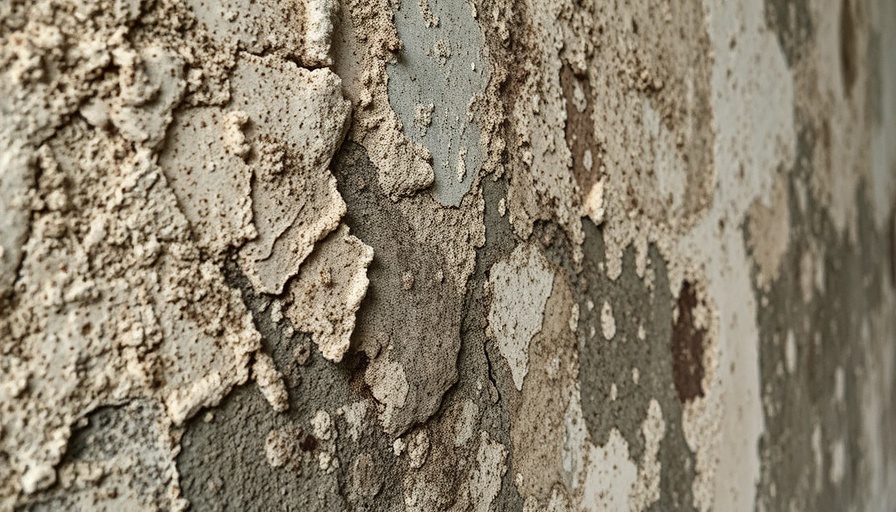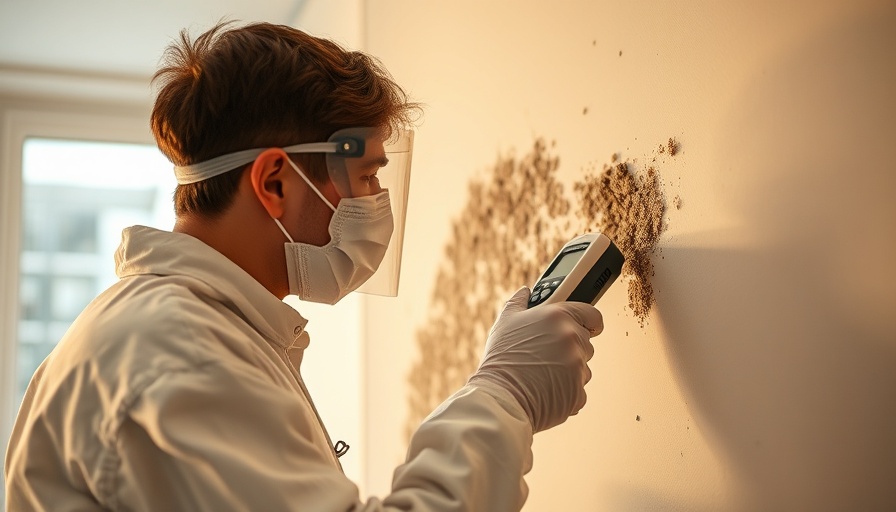
Understanding the Mold Risk in Portland
Mold can be a persistent issue for homeowners in Portland, given the region’s lush greenery and frequent rainfall. With over 36 inches of precipitation annually, it’s crucial to remain vigilant about mold management. Mold spores are ubiquitous and can enter homes through various sources like open windows, doors, or even on pets and clothing. Once indoors, they find moisture, which is prevalent in many Portland households. As such, knowing how mold develops is vital for effective prevention.
Identifying Mold: Spot the Signs Early
One of the first steps in preventing mold is knowing what to look for. Mold can appear in various colors, including black, green, and white. It often carries a musty odor, indicating moisture build-up. Regular inspections are key; pay attention to often forgotten areas, such as attics, basements, and behind appliances. If allergy-like symptoms elevate in your household, it could be a sign of mold presence.
Moisture Control: The Core Prevention Strategy
Since mold thrives in humid conditions, controlling moisture is paramount. Pay close attention to your home’s moisture levels, keeping indoor humidity between 30-50%. Utilization of dehumidifiers can dramatically help in moisture management, especially in areas like bathrooms and basements. Promptly repair leaks in roofs, pipes, and drainage systems to mitigate excess moisture.
Proper Ventilation: Ensure Healthy Airflow
Ventilation is crucial. If your home has poor airflow, mold can flourish unnoticed. Utilize exhaust fans in kitchens and bathrooms to eliminate excess moisture generated during cooking and showering. Also, consider opening windows whenever practical to promote fresh air circulation.
Proactive Measures: Renovate with Mold-Resistant Materials
For those considering renovations, choosing mold-resistant materials is beneficial. Products such as mold-resistant drywall and paint can significantly reduce the likelihood of future infestations. Keeping your building materials healthy from the start can save you from costly remediation later.
Cleaning Mold: Practical Tips for Homeowners
If mold does invade your space, timely action is critical. Clean visible mold with a mixture of one cup of bleach to one gallon of water, but ensure you wear protective gear to avoid inhaling spores. For minimal infestations, essential household items like vinegar or hydrogen peroxide can also serve as effective cleaning agents.
Health Risks of Mold Exposure: A Serious Concern
The serious health implications of mold exposure cannot be overstated. Mold spores can trigger allergic reactions, asthma attacks, and other significant respiratory issues. Particularly vulnerable groups include children, the elderly, and those with preexisting conditions. Understanding these health risks reinforces the importance of mold prevention.
Long-Term Mold Prevention Strategies
Addressing mold is an ongoing process. Ensure your HVAC systems are regularly maintained and check for signs of condensation, especially around windows and pipes. Promptly handling any water leaks or flooding is essential in maintaining a mold-free home.
When to Seek Professional Help
If mold issues persist beyond your control or cover more than an area of 3x3 feet, it's wise to contact professionals. They have the tools and knowledge to manage extensive infestations adequately. Be sure to inquire about their experience and past success stories in mold remediation.
In conclusion, understanding, identifying, and managing mold risks is critical for homeowners in Portland. With careful monitoring and proactive measures, you can maintain a healthier living environment for you and your family. Don’t let mold take over your home—implement these strategies today!
 Add Row
Add Row  Add
Add 




 Add Row
Add Row  Add
Add 

Write A Comment